Cuba vintage car tour with Havana Urban Adventures! Renting a classic convertible, Callejon de Hamel Santeria.

When you think of Havana, Cuba — do classic cars come to mind? These sleek, 1950s-era automobiles are the only rides on the road in this fascinating country, where time seems to have frozen.
My dream was to ride down the Malecon in a vintage convertible… and this came true thanks to Havana Urban Adventures!

Urban Adventures offers one-of-a-kind, offbeat experiences in cities worldwide. These aren’t your typical tours; they’re small group or private adventures that let you dive deep into local life.
Read on to see how I cruised through Havana in this slick red “almendrón” (the Cuban word for antique auto)…

… and learned about Santeria (the Afro-Cuban religion of divine spirits), at the art-filled Callejon de Hamel.
(Photography by Asta Mail and me.)
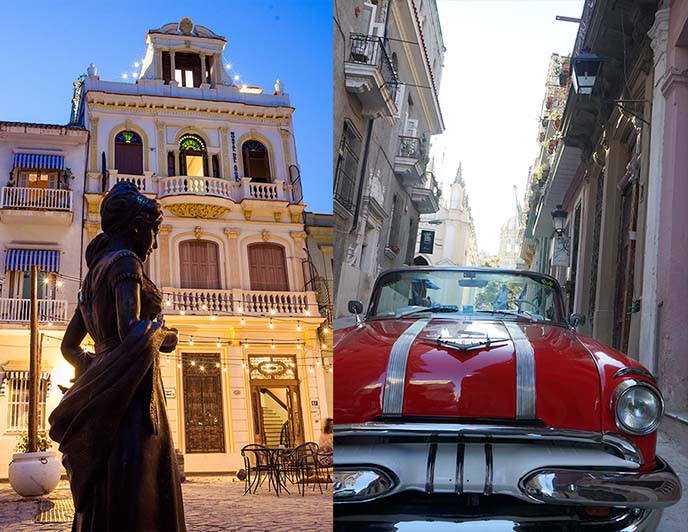
In my first post about Cuba, I wrote about the joy of staying in a “casa particular” (Prado Colonial) and supporting local businesses. (You can read the full review here; definitely reach out if you’re looking for an authentic place to stay in Old Havana.)
When we made a booking with Urban Adventures, we received vouchers with confirmations of the start time, location, contact details and other info. In our case, the classic car came straight to our front door to pick us up for the 2 hour ride.

“Best day ever” is accurate, when it comes to their tours. As you may recall, I also linked up with Urban Adventures in Athens and Bucharest. I’m impressed by how their guides are always full of passion for their hometowns. In this case, Armando (Mandy) greeted us with a smile, and whisked us off on an adventure.
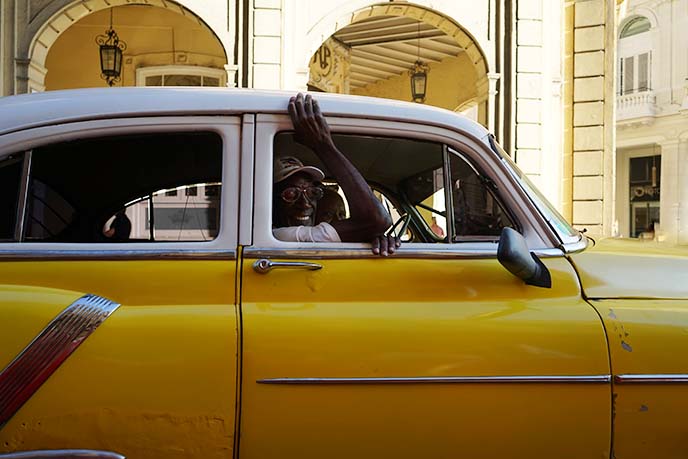
While the driver navigated, Mandy filled us in on the colorful sights around us. We rode through Habana Viejo and Miramar, where we glimpsed colonial architecture, monuments, and the glamorous Fifth Avenue. Such a joy to ride through these streets in an antique car, and soak it all in.

Our first stop: Plaza de la Revolución, or Revolution Square.
Behind me, you can see a memorial to Camilo Cienfuegos, one of the four leaders of the Cuban Revolution (along with Fidel Castro, Raul Castro and Che Guevara). Manny explained that “Vas bien, Fidel” (You’re doing fine) refers to the supportive comment he made to the leader during his speech to the people.
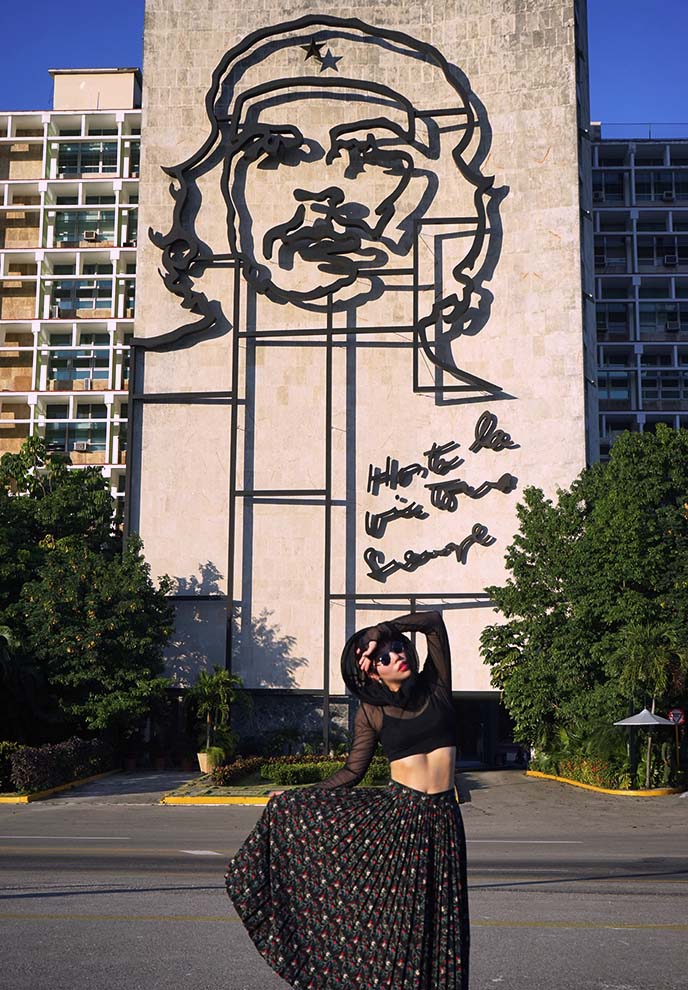
Next to him is this iconic counterculture portrait. I’m sure you recognize the face of Che Guevara, the guerrilla revolutionary! Che’s slogan, “hasta la victoria siempre” (Until victory always), exemplifies how he always strove to the fullest in his quest to help the people of Latin America.
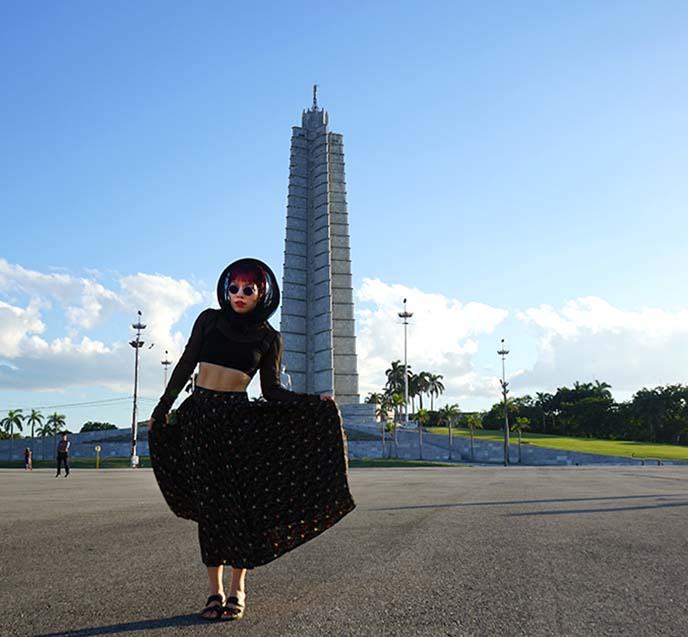
On the other side of Revolution Square rises José Martí Memorial. It’s a tribute to this 19th century national hero of Cuba, and consists of a statue of Marti, a star-shaped tower, and gardens.

Cuba has a fascinating political / cultural history that is unlike any other country (and very different from its neighbors in the Caribbean).
I was keen to learn more about the Communist takeover from a Cuban perspective, so I later visited the Museum of the Revolution (Museo de la Revolucion) in Old Havana. It’s filled with black and white photos of the leaders, and facts / records that may surprise you. I recommend it to all my fellow history buffs.

Onward to Vedado, a more modern and residential district of Havana. We drove through neighborhoods with beautiful homes, and then stopped in Havana Forest to take photos.
Outfit of the Day: Do you dig my Goth 1950s look? My hooded mesh black top is Cyberdog, my long floral skirt is from Hong Kong, and I’m wearing these exact John Lennon round sunglasses.
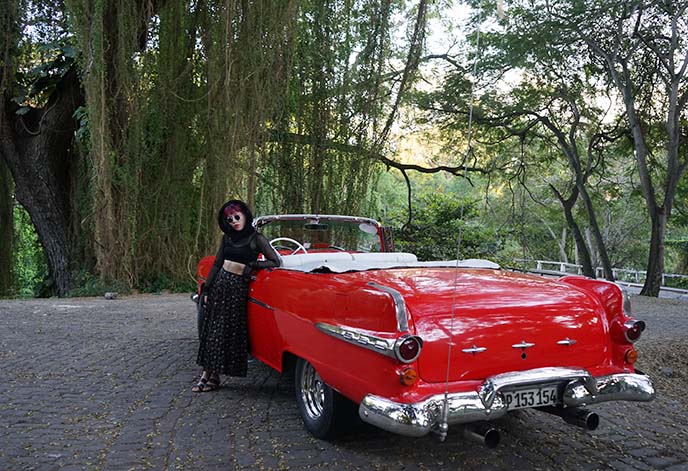
Asta and I were surprised to see this jungle area, in the middle of busy Havana! We took a moment to explore this lush park, featuring a river and waving trees.

Many Santeria practitioners come here to perform rituals in the stream, including animal sacrifices. Keep an open mind, and if you see worshipers dressed in white, don’t point a camera at them.
(There’s more on this Cuban religion further down in the post, so read on.)
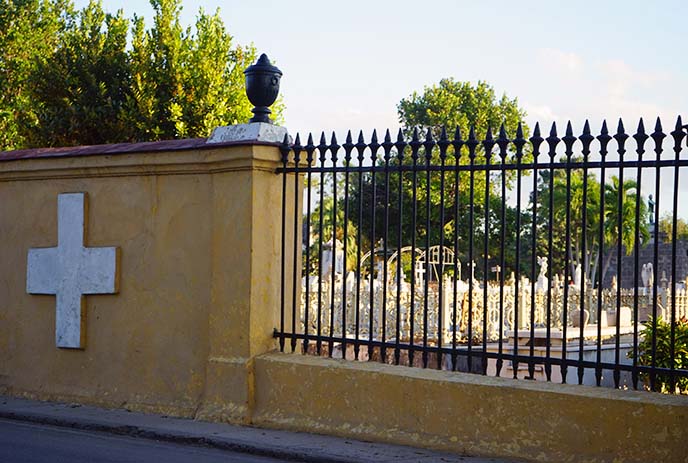
We passed by the sprawling Colon Cemetery, founded in 1876 in the Vedado neighbourhood. Named after Christopher Columbus, there are over 500 mausoleums covering 140 acres. I’ll have to come back next time to walk through this impressive graveyard, packed with white tombstones.

There’s truly no better way to get into the spirit of Cuba than by taking an old American car tour. What’s the deal with these antique vehicles everywhere?

In 1959, Fidel Castro banned foreign vehicle imports, making it impossible to purchase cars from abroad. Since then, pretty much the only wheels on the road are remnants from this era, when American expats cruised through Havana in hot rods.

Our Urban Adventures vintage car tour ended with a drive along the Malecon, as the sun was setting. We sat in the back of our cherry red convertible, and took in the soft breeze and warm light…. pure Cuba bliss.

I loved spotting cars with space-age “tail fins”, a 1950s signature. So many classic American names on the road here: Chevy, Plymouth, Buick, Ford, Oldsmobile.
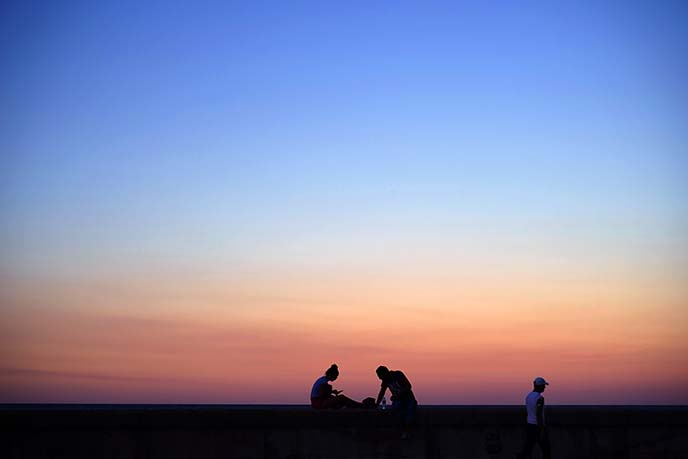
The Malecon is Cuba’s seawall, which wraps along the coast for 8 km (from Old to Central Havana, and ending in Vedado). You’ll see locals hanging out on the stone wall at all hours, but the scene is most beautiful at sunset.
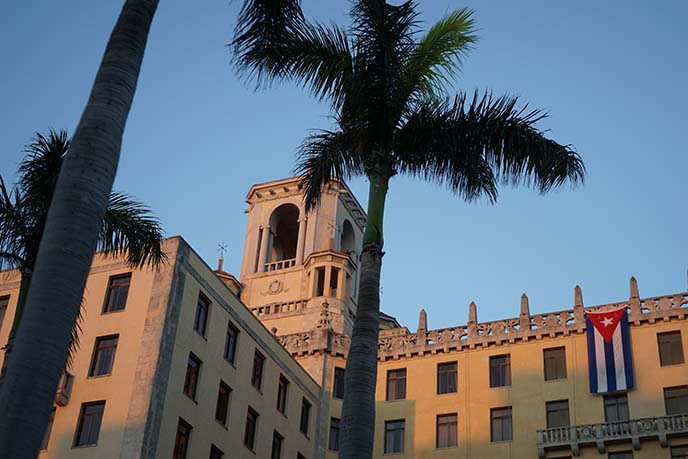
We ended the journey at The Hotel Nacional de Cuba. It’s a grand, historic hotel that was the favorite of 1930s American gangsters, famous crooners, and silver screen stars.

Inside, we looked at a display that celebrated National Hotel’s most famous guests, including Yuri Gagarin, the first human in outerspace (who met Castro in 1961, and was celebrated in Cuba). Such a cool spot to drink a Mojito and reflect on the old days.

I think these photos say it all… Urban Adventures’ vintage car tour is the sweetest way to explore the neighborhoods of Havana! More info here on how you can book a ride with them in an antique American convertible. (You can even put in a request for a specific car color.)

Asta and I loved our Urban Adventures tour so much that we did another the next day. We met guide Yanet for the Afro-Cuban religions tour, which let us explore Santeria and the local spirituality. As always, our experienced guide enabled us to get insider access to a subculture.
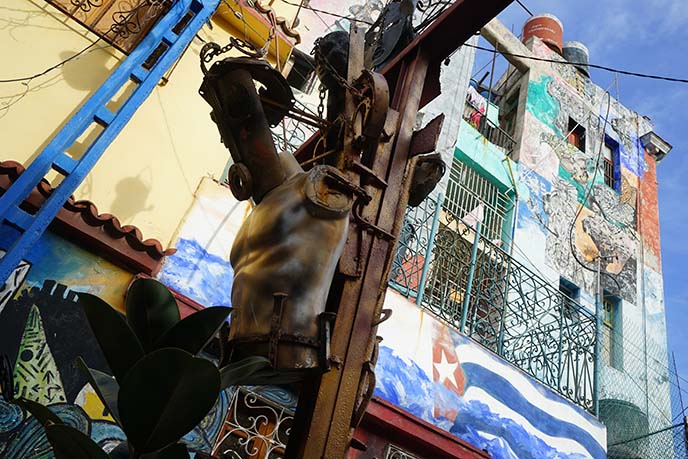
The journey takes place at Callejón de Hamel, a hub filled with alleyways of bright murals and sculptures. The artist, Salvador Gonzáles Escalona, began this project in 1990 to renew the surrounding neighborhood, and create a space for the Santeria community.

We admired the colorful paintings by Salvador, mixed in with works made from scrap objects like bathtubs, pinwheels and mechanical tools. The eclectic vibe reminded me of Philadelphia’s Magic Gardens.
I wore a rainbow-witch outfit that day. You can find many of my clothes for sale here on Depop; contact me if I can send you anything from my personal wardrobe!

Our guide, Yanet, explained the installations and spoke about the roots of Santeria. This Afro-Cuban religion has origins in the native spirituality of Africa, and became syncretized with Catholicism during colonial times (when slaves were brought to the New World).
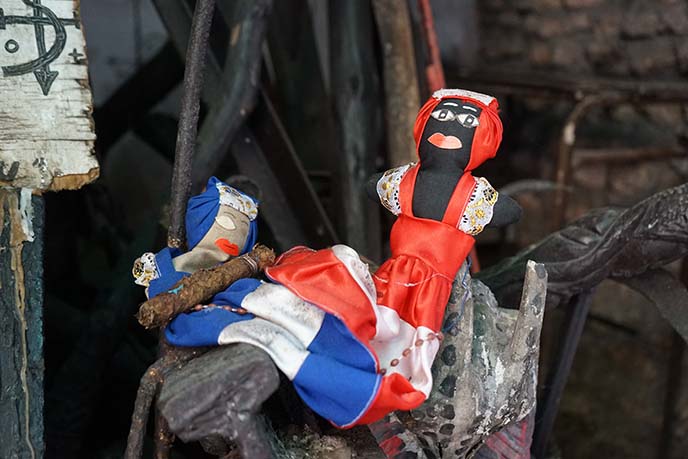
Cuba’s spiritual practices are a mix of local customs, folklore, and beliefs from various sources. Some people mistakenly associate Santeria with voodoo, but these two are very different (voudou is a syncretic religion practiced mainly in Haiti.)

Callejon de Hamel is free for anyone to visit. It’s hard to imagine that this once was a sketchy, desolate area: Salvador has transformed it into an inviting, positive space. You can often catch musicians and rumba dancers performing in these alleys.
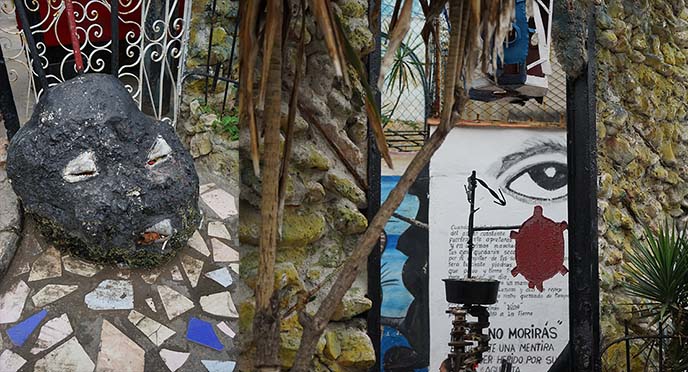
Yanet taught us about the orishas, or gods of the Santeria pantheon. One of my favorites is Elegua (on the left), represented as a playful child or old man. Visitors leave Cuban cigars in his mouth to keep this trickster happy.

There’s also a god of war (Changó), goddess of love (Oshún), a mother figure (Yemayá), a hunter (Ochosi), healer (Babalú Ayé) and more.

Santeria translates to “worship of the saints,” as there is a creator god and a number of lesser deities. These orishas rule over various aspects of human nature and endeavor, and you can call upon them depending on your particular situation.

When the colonialists shipped Africans to the Caribbean to work as slaves, they also baptized them as Catholics and banned their tribal faiths. However, the Africans still worshiped their orishas in secret, by associating them with Christian saints like St. Christopher. Santeria therefore developed as a unique syncretism.

We met a babalawo, or priest. His role is to be a spiritual adviser, and help people in various ways — including by fortune-telling with the tossing of shells.
Urban Adventures has special permission to enter the home of Salvador (the artist) and his family. We got to see their personal shrines to the orishas, where they make offerings of food, and bow in a way that touches each elbow to the ground.
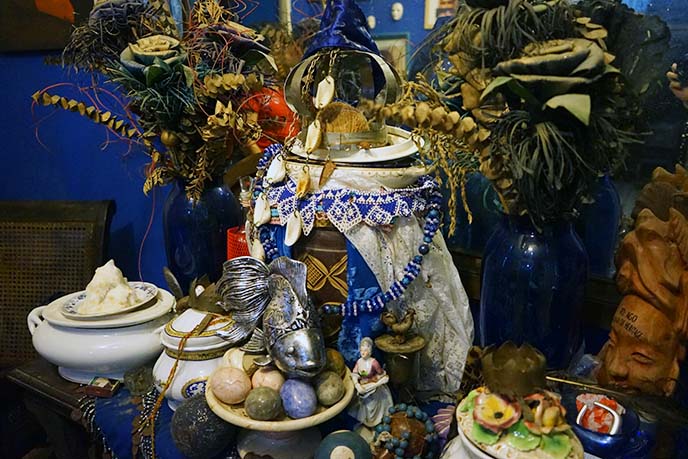
In Santeria, each practitioner is associated with one protector deity (which you determine through ritual and the advice of the babalawo). This family member’s orisha is Yemaya, the fierce mother of the seas — hence the blue decorations, shells, fish and other objects related to her.
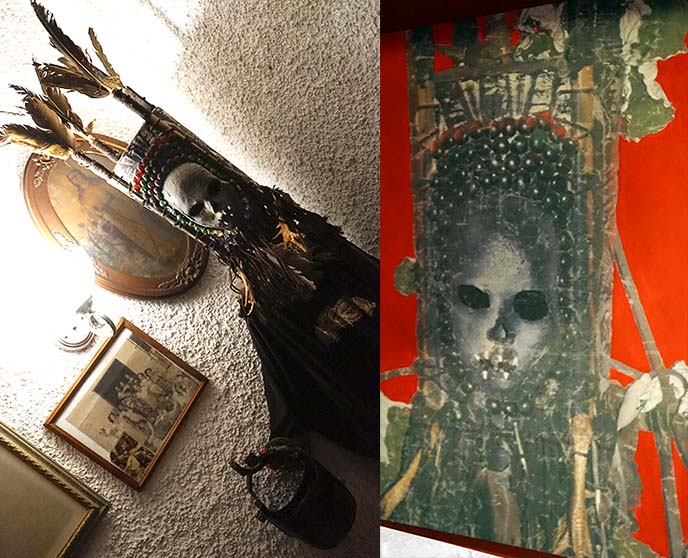
These personal shrines stay with them their entire lives. When Iku (the deity of death) arrives, the babalawo consults the spirits to find out what to do with the objects (burn them, bury them, etc).

We loved learning about Cuban spirituality and culture up-close. If you simply walk through the streets of Old Havana, you’ll come across colorful aspects — like this costumed parade of stilt-walkers.
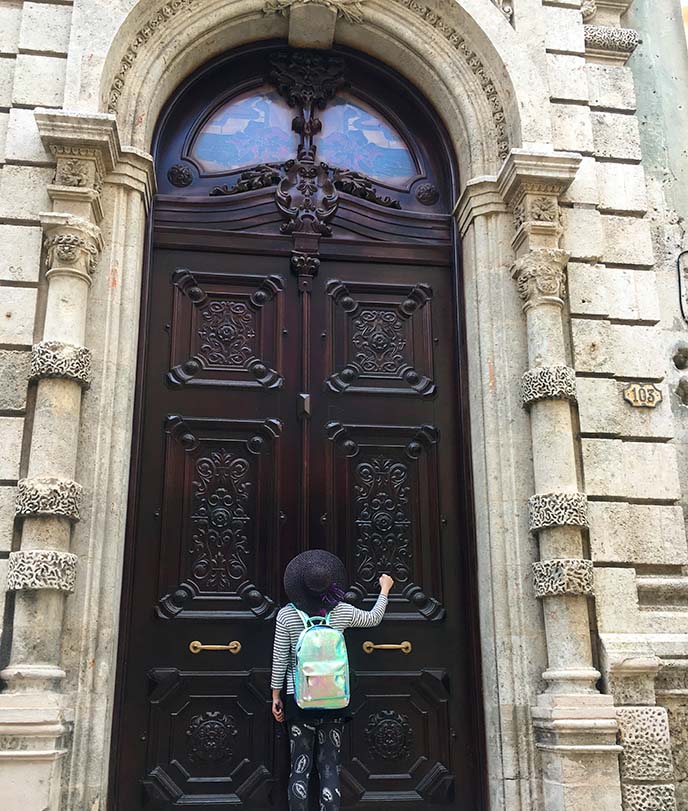
The colonial legacy is everywhere to be seen, especially in the dramatic architecture and tall doorways.

Havana is a safe city, and “chill” is the best word to describe the residents. You’ll see locals hanging out on doorsteps, and chatting with their neighbors.
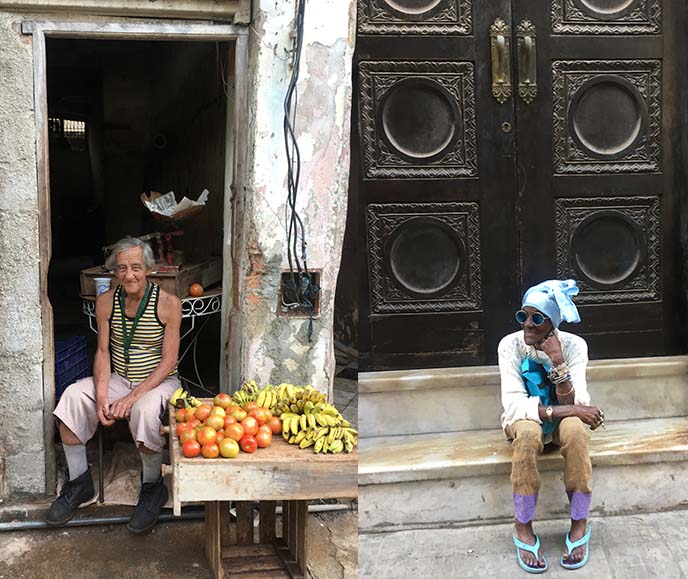
Headwraps and bright clothing are a common sight.
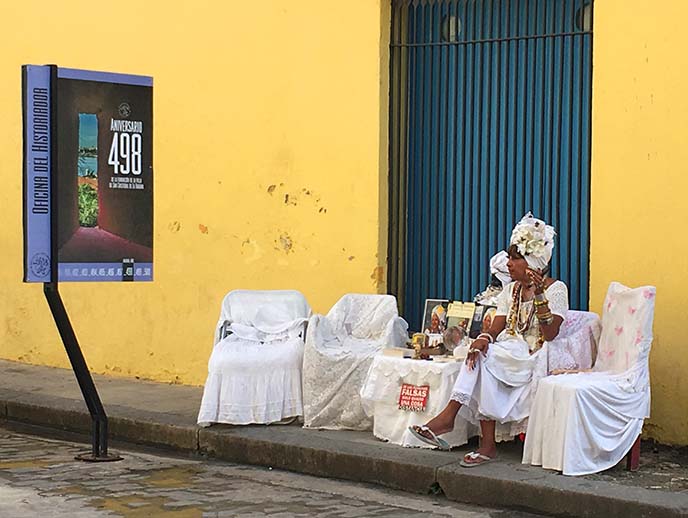
I came across a fortune teller, clad in white and with strands of beads draped around her neck.

Havana is also associated with author Ernest Hemingway, who lived here from about 1940-60. Many tourists visit his favorite bars, La Floridita and La Bodeguita del Medio, where he drank daiquiris and mojitos. (I didn’t visit, as I was more interested in seeing the romantic gardens all around Havana.)

We ran into more street art by Yulier Rodriguez. His provocative, signature style is unmistakable.

How fitting to find a motorcycle, in front of this mural of Che Guevara! When he was a young medical student, Che rode 5000 miles through South America (as documented in his book “The Motorcycle Diaries.”) The journey opened his eyes, and stirred his dream of seeing a united Latin America.
On the right, we see “Estudio, Trabajo, Fusil” (Study, Work, Rifle), the motto of Cuba’s Communist Youth Union.

It was interesting to learn the Cuban point-of-view of historical events and figures. They highlighted achievements such as the excellent medical and educational system, which is open to all Cubans regardless of their income.

Without doubt, Havana is a city of music and color! Where else can you pay 2 CUC ($2) for a mojito, and enjoy an energetic rumba?

These silly boys welcomed us back to our casa particular, Prado Colonial. I’m all about supporting small local businesses, and staying with a casa is one of the easiest ways to do so. (More info and photos of our hotel here.)

Gracias Havana Urban Adventures for making my “greased lightning” goals a reality! If only I could take this classic auto home as a souvenir…
Have you been to Cuba? Planning a trip? Feel free to leave a comment if I can help you with travel tips, and I’ll gladly reply.
SHARE & COMMENT

 LA CARMINA
LA CARMINA







3 Comments
I want to see Cuba one day.
Hi there. Thanks for this info! Interesting page :).
Algun día estaremos allí!! Gracias por las hermosas fotografías!